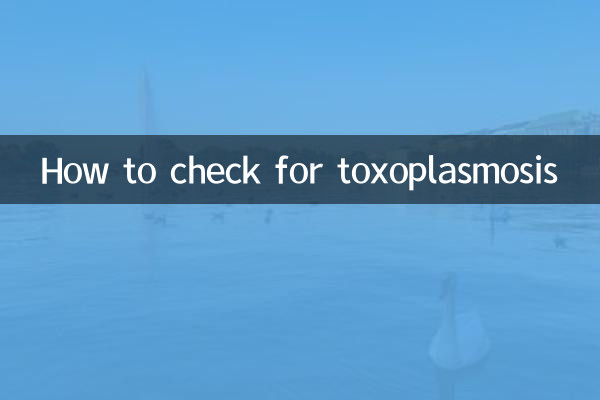How to check for toxoplasmosis
Toxoplasmosis is a type of toxoplasma gondii (Toxoplasma gondii) Parasitic diseases caused by infection can be transmitted through exposure to infected cat feces, eating undercooked meat or mother-to-child. In recent years, with the popularity of pet breeding and the concern of food safety issues, the detection and prevention of toxoplasmosis have become a hot topic. The following are detailed contents about toxoplasmosis examination, including inspection methods, applicable populations and precautions.
1. Testing methods for toxoplasmosis

The examination of toxoplasmosis mainly passes laboratory testing, including serological testing, molecular biological testing and imaging testing. The following are common inspection methods and their characteristics:
| Inspection method | principle | Applicable groups | Pros and cons |
|---|---|---|---|
| Serological test (antibody test) | Detection of IgM and IgG antibodies in the blood | Pregnant women, people with low immunity | Simple operation, but cannot distinguish between recent infections and past infections |
| PCR detection | Detection of Toxoplasma DNA | Suspected acute infection | High sensitivity, but high cost |
| Cerebrospinal fluid examination | Detect antibodies or DNA in cerebrospinal fluid | People with central nervous system infection | Strong specificity, but lumbar puncture is required |
| Imaging examination (CT/MRI) | Observe brain lesions | Severely infected person | Intuitive, but undiagnosed |
2. Which groups of people need to check for toxoplasmosis?
The following populations are recommended for screening for toxoplasmosis:
1.Pregnant woman: Toxoplasma infection may cause fetal malformation or miscarriage, and pre-pregnancy or pregnancy examination is particularly important.
2.Those with low immunity: For example, patients with AIDS and patients after organ transplantation may develop severe illness after infection.
3.Pet keeper: Especially for families with cats, the risk of exposure to cat feces is higher.
4.Those who often eat raw or undercooked meat: For example, people who like sashimi and half-cooked steak.
3. Precautions for Toxoplasmosis examination
1.Check the timing: IgM antibodies appear 1-2 weeks after infection, and IgG antibodies appear several weeks to several months after infection. The appropriate time to test is required based on the symptoms.
2.Interpretation of results: Simple IgG positive may be a previous infection, and a comprehensive judgment is required for combination of IgM and clinical symptoms.
3.Preventive measures: Avoid contact with cat feces or undercooked meat before checking to reduce the risk of false positives.
4. How to prevent toxoplasmosis?
1. Avoid eating undercooked meat and make sure the food is heated above 70°C.
2. Wash your hands thoroughly after handling raw meat to avoid contact with your mouth or eyes.
3. Pregnant women avoid cleaning cat litter. If they need to touch, they need to wear gloves and wash their hands.
4. Deworm your pet regularly and maintain environmental sanitation.
5. Summary
There are various methods for testing toxoplasmosis, and choosing a suitable testing method requires personal information and doctor's advice. Especially for pregnant women and people with low immunity, the screening and prevention of toxoplasmosis should be highly valued. Through scientific examinations and a healthy lifestyle, the risk of infection can be effectively reduced.
If you have suspected symptoms or are at a high risk group, it is recommended to seek medical treatment in a timely manner and conduct professional testing.

check the details

check the details